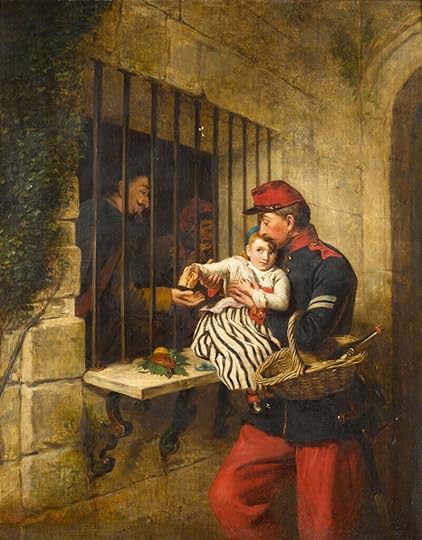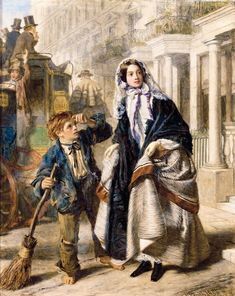The Old Curiosity Club discussion

This topic is about
Little Dorrit
Little Dorrit
>
Little Dorrit, Book 1, Chp. 01-04
date newest »
newest »
 newest »
newest »
 I'm feeling whiplash. This is my first time reading this novel, so I'm curious if that was the desired effect by Dickenson. Each of these four chapters very firmly situated itself with those amazing descriptions, but then immediately moved to a new setting. I find my self able to recognize the characters and settings as discussed in this forum, but I don't think I could bring up any solid impressions of my own. The introduction to so many people and places has left me overwhelmed. Do any you repeat readers have any insight to this dizzying effect to the introduction?
I'm feeling whiplash. This is my first time reading this novel, so I'm curious if that was the desired effect by Dickenson. Each of these four chapters very firmly situated itself with those amazing descriptions, but then immediately moved to a new setting. I find my self able to recognize the characters and settings as discussed in this forum, but I don't think I could bring up any solid impressions of my own. The introduction to so many people and places has left me overwhelmed. Do any you repeat readers have any insight to this dizzying effect to the introduction?
 Hi, Avery. No question, there's a lot going on in these chapters, right from the start. When I read "Martin Chuzzlewit" I actually had to draw myself a family tree to try to keep the characters and their relationships straight. So I get it!
Hi, Avery. No question, there's a lot going on in these chapters, right from the start. When I read "Martin Chuzzlewit" I actually had to draw myself a family tree to try to keep the characters and their relationships straight. So I get it!I guess the one thing I can offer is that by the end of our second week, we will have met most of the main characters, at least briefly, and that their stories will soon start to intersect. Hopefully Peter and Tristram's recaps and our discussions will be beneficial in helping to keep the characters straight, and their stories clear. It's definitely worth it. :-)
Avery wrote: "I'm feeling whiplash. This is my first time reading this novel, so I'm curious if that was the desired effect by Dickenson. Each of these four chapters very firmly situated itself with those amazin..."
Hi Avery,
Like Mary Lou, I can only tell you not to let this feeling of disorientation get the better of you because very soon, the stories will show their connections, and you will see the drift of it all.
Here is some tip for you, which I set into spoiler brackets, although I don't really spill any beans here: (view spoiler)
Hi Avery,
Like Mary Lou, I can only tell you not to let this feeling of disorientation get the better of you because very soon, the stories will show their connections, and you will see the drift of it all.
Here is some tip for you, which I set into spoiler brackets, although I don't really spill any beans here: (view spoiler)
Avery wrote: "Peacejanz wrote: "Sorry, but I did not "get" that we are supposed to like the Meagles. I have not liked him or any of the family from the first. I like Tattycoram from the first - she is a slave, n..."
You are right in saying that Dickens is an extremely socially-aware author in that one of his aims is to point out the predicaments and plights of the poor. That being said, Dickens is also rather conservative in that he does not see the characters as representatives of classes mainly and neither does he see history as a dialectics of class struggles. On the contrary, it is the individual that counts with him - some of his poor characters are good, some aren't (in fact, a book like Oliver Twist has a lot of poor people who are villainous as hell), and the same is true of the well-to-do people. So I don't think that Dickens regarded the Meagleses as abusers of the working classes because of their own social position, as some leftist authors would have done, but he sees them as individuals in their own right.
You are right in saying that Dickens is an extremely socially-aware author in that one of his aims is to point out the predicaments and plights of the poor. That being said, Dickens is also rather conservative in that he does not see the characters as representatives of classes mainly and neither does he see history as a dialectics of class struggles. On the contrary, it is the individual that counts with him - some of his poor characters are good, some aren't (in fact, a book like Oliver Twist has a lot of poor people who are villainous as hell), and the same is true of the well-to-do people. So I don't think that Dickens regarded the Meagleses as abusers of the working classes because of their own social position, as some leftist authors would have done, but he sees them as individuals in their own right.
 Interesting that Rigaud is hidden, somewhat, behind the bars, while the jailer and his daughter at the main focus. And yet, his hand that we hear so much about comes through the bars to be central in the illustration.
Interesting that Rigaud is hidden, somewhat, behind the bars, while the jailer and his daughter at the main focus. And yet, his hand that we hear so much about comes through the bars to be central in the illustration.
Nice Kim, thanks
This is a lesser known work of Frith. For those of us who are using the Penguin edition of Little Dorrit, the front cover picture is by Frith. The interior b&w pic of Dickens is also a Frith.
Frith did a wonderful picture of Dolly Varden which became quite famous in the 19C.
This is a lesser known work of Frith. For those of us who are using the Penguin edition of Little Dorrit, the front cover picture is by Frith. The interior b&w pic of Dickens is also a Frith.
Frith did a wonderful picture of Dolly Varden which became quite famous in the 19C.
Peter wrote: "Frith did a wonderful picture of Dolly Varden which became quite famous in the 19C."
I just took a look at the Dolly Varden painting - in fact, I found two by Frith, both quite similar - and must say that they confirmed me in my deeply-rooted Dolly-admiration! Thanks for pointing them out, Peter!
I just took a look at the Dolly Varden painting - in fact, I found two by Frith, both quite similar - and must say that they confirmed me in my deeply-rooted Dolly-admiration! Thanks for pointing them out, Peter!
This one also says Dolly Varden. I should have put them in the right folder, but since we started here I'll finish here. Maybe I'll move them later. Anyway, I don't know who is with Dolly, it doesn't say, but would they really have been dressed like this and had their hair like this?


I don't know about the fashion, Kim, but Frith must have been in love with Dolly to make her so lovely.














I also did not get that we were supposed to 'like' the Beagles! I'm very new Dickens, but wasn't a major theme of his work how the working classes were mistreated? And in ways that the abusers were not even cognizant of? I thought part of the point was to illustrate these situations to everyone, and help them see their own lives a little more clearly.